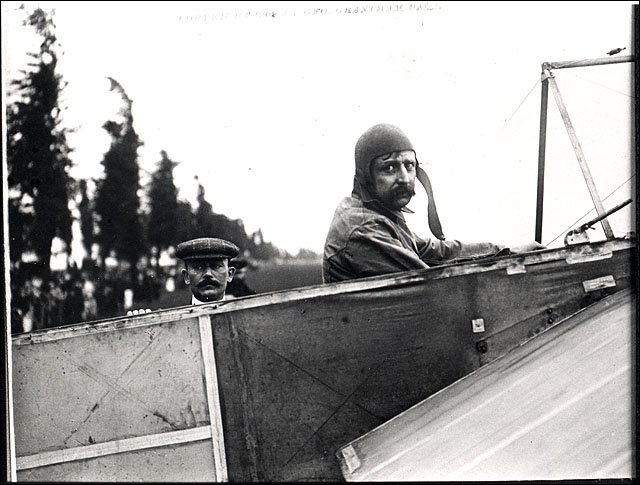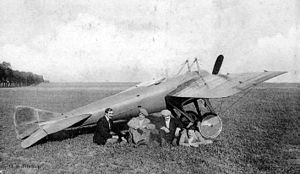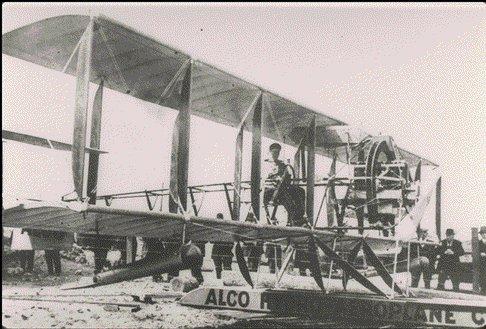
 Having dazzled America with their accomplishments, the Wright brothers set out to conquer the European continent.
Having dazzled America with their accomplishments, the Wright brothers set out to conquer the European continent. Not to be outdone by the upstart Americans, Frenchman Louis Bleriot led the European assault on the aviation record books, becoming the first man to fly across the English Channel. Bleriot's crossing of the English Channel made him an instant international celebrity.
Not to be outdone by the upstart Americans, Frenchman Louis Bleriot led the European assault on the aviation record books, becoming the first man to fly across the English Channel. Bleriot's crossing of the English Channel made him an instant international celebrity.
American, Harriet Quimby, became the first woman to cross the English Channel in 1911.
Credits - © 2002 National Air and Space Museum, Smithsonian Institution (SI Neg. 87-9386)
 The streamlined design of the French-built Deperdussin allowed it to dominate serial speed records in 1912.
The streamlined design of the French-built Deperdussin allowed it to dominate serial speed records in 1912.
Flying a Wright-built airplane, Calbraith Perry Rodgers spanned the American continent and brought the miracle of aviation to almost every corner of the Continental United States.
His daring surpassed only by his ambition, Glenn Curtiss led the challenge against the Wright brothers for superiority in the American skies. The object of the Wright brothers wrath: Glenn Curtiss and his biplane.
The feud between the brothers and Curtiss led to a lawsuit that dragged on for years, eventually contributing to the early death of Wilbur Wright.
The Curtiss influence on American aviation was far-reaching. Whether piloting the Langley Aerodrome or providing engines for the early works of the brilliant Lougheed brothers, Glenn Curtiss asserted himself quickly and forcefully in American aviation circles.

The Lougheed Model G, featuring an 80 horsepower Curtiss engine and consisting of fabric stretched and glued over a wooden frame, was the first effort of Allan and Malcolm Lougheed.
No comments:
Post a Comment